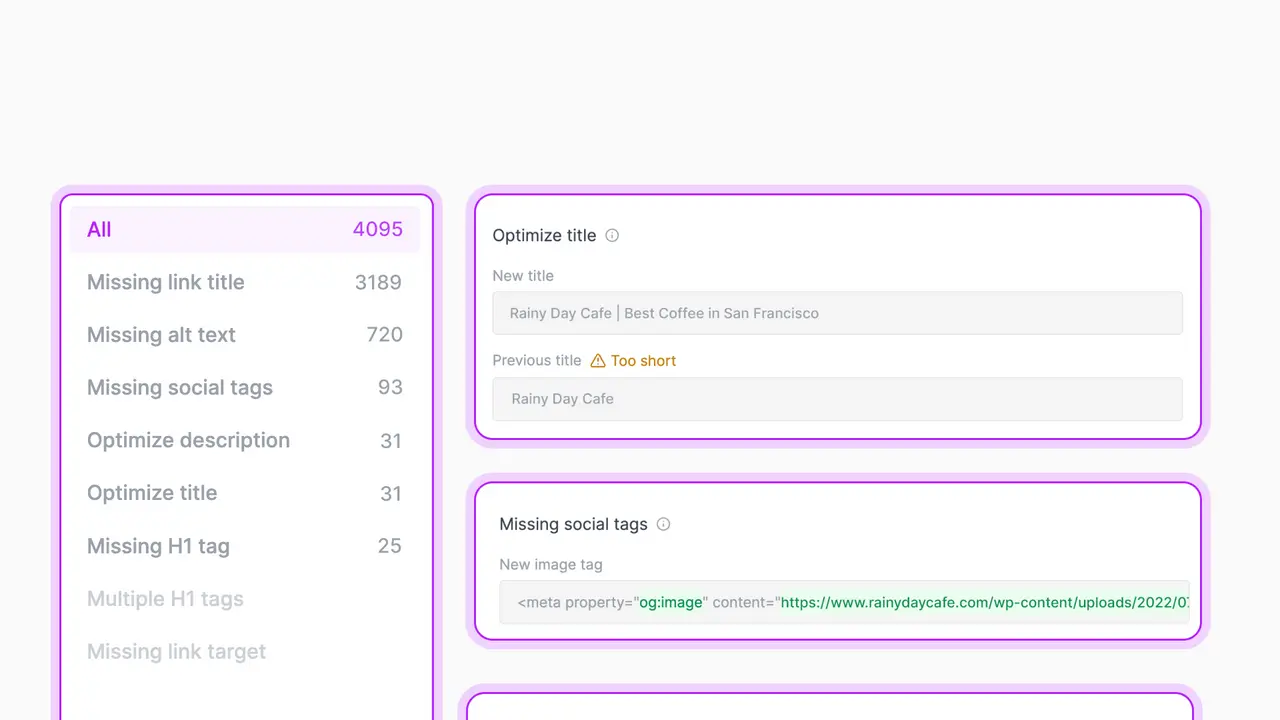Table of contents
Introduction:Crafting a Top-Notch Website: Your Guide to Key Success IngredientsKey TakeawayWhat Makes a Good Website? Key Components for Success
Want to know what makes a good website truly stand out? From optimal user experience to the best SEO practices, this guide breaks down the key elements you need

Introduction:
Your website is the digital storefront of your business. An effective site is pivotal to creating an impactful online presence and success. Knowing what makes a good website is crucial in achieving your online objectives, whether related to e-commerce, information sharing, or building a follower base.
Crafting a Top-Notch Website: Your Guide to Key Success Ingredients
Building a good website might seem tricky, but it doesn’t have to be! It’s all about mixing the right components together to create a space that’s not only nice to look at but also easy and fun for your visitors to use.
Think about what grabs your attention when you visit a website - is it the cool design, how fast it loads, or how simple it is to find what you need? In our journey today, we’ll explore all the essential elements that make a website shine in the crowded online world. So, whether you’re building your first website or looking to improve an existing one, you’ll find something useful here! Let's dive in and discover the secrets to website success.
User-Friendly Navigation
Navigation Menu
The first element to consider when discussing what makes a good website is its navigation. A well-structured navigation menu is like a roadmap for your users. It should be clear, concise, and easy to use. Your menu should include essential pages such as Home, About Us, Services, Products, Blog, and Contact. Use descriptive labels to guide users effectively.
Intuitive Layout
A cluttered and confusing layout can turn visitors away. Ensure that your website layout is intuitive with a logical flow. The most important information should be easily accessible, and users should not have to dig deep to find what they need.
Responsive Design
In today's mobile-centric world, a responsive design is a must. A good website adapts seamlessly to different devices and screen sizes. This not only enhances the user experience but also positively affects your search engine rankings. Search engines like Google prioritize mobile-friendly websites in their rankings.
Compelling Visual Design
Visually Appealing
Aesthetic design is a critical factor in what makes a good website. Visitors are likelier to stay on a website that looks attractive and professional. Invest in high-quality images, use consistent color schemes, and maintain a clean design that aligns with your brand identity.
Readability
A visually appealing website must also prioritize readability. Choose legible fonts, maintain proper contrast between text and background, and ensure that text is well-spaced. Remember that users should be able to scan and read content effortlessly.
High-Quality Content
Engaging and Informative
Content is king, and it plays a pivotal role in determining what makes a good website. Your content should be engaging, informative, and relevant to your audience. Whether you're providing product descriptions, blog posts, or informative articles, make sure they add value.
Regular Updates
Keeping your content fresh and up-to-date is essential. Outdated information can harm your website's credibility and user experience. Regularly update your blog, product listings, and other content areas to stay relevant in your industry.
With tools like Seona, you can expedite your content creation process without compromising quality. It helps you craft content that is not only engaging and informative but also tailored to meet the needs and preferences of your target audience.
Branding
A good website often transcends mere functionality, encapsulating a brand’s essence through visuals, content, and overall design. Consistent use of logos, color schemes, and a unified voice in a range can forge a lasting impression on visitors, morphing them into loyal customers or followers.
SEO Optimization
Keyword Research
To rank well on search engines like Google, you must conduct thorough keyword research. Identify the keywords and phrases your target audience is searching for and incorporate them naturally into your content.
On-Page SEO
Optimize every page of your website for search engines. This includes optimizing meta titles, meta descriptions, header tags (H1, H2, H3), and image alt text. Each page should target specific keywords related to your content.
High-Quality Backlinks
Acquiring high-quality backlinks from authoritative websites can significantly boost your website's SEO. Invest in outreach and content marketing strategies to earn backlinks from
reputable sources within your industry.
SEO too complicated?
Try out Seona by StyleAI. It’s an all in one AI SEO tool that automatically handles all aspects of your site’s SEO. Check it out here.
Mobile Optimization
Mobile optimization is no longer just an option; it is a critical component. A mobile-optimized website adapts seamlessly to various screen sizes, ensuring users on smartphones and tablets experience a website that is as coherent and navigable as on a desktop.
Optimized Images and Multimedia
Optimizing images and multimedia is critical to making a website attractive and efficient. Here's a simplified breakdown of its importance and how it's achieved:
- Select high-quality images and videos that are directly related to your content.
- Reduce image file sizes without losing noticeable quality to keep your site loading quickly.
- Ensure pictures look good on all device sizes by making them adaptable to different screens.
- Use modern formats and smart loading techniques to keep videos smooth without eating up user bandwidth.
- Add alt text to images and video captions for better accessibility and SEO.
- Let users control videos (play/pause) and image sliders for a friendly experience.
- Only use images and videos that are free to use, purchased, or used with permission.
- Adjust visual content to be appropriate and relatable for users from diverse backgrounds and locations.
Fast Loading Speed
Page speed is a critical factor in user experience and SEO. Slow-loading websites can frustrate users and lead to higher bounce rates. Optimize your website's performance by compressing images, using browser caching, and minimizing HTTP requests.
Secure and Trustworthy
Visitors want to feel safe when browsing your website. Implement security measures such as SSL certificates to encrypt data and protect user information. Display trust signals, such as trust badges and privacy policies, to reassure users that their information is safe with you.
Clear Calls to Action (CTAs)
Every page on your website should have a clear and compelling call to action. Whether it's signing up for a newsletter, making a purchase, or contacting your business, CTAs guide users toward their next steps. Use action-oriented language and strategic placement to encourage user engagement.
Accessibility
A good website should be accessible to all users, including those with disabilities. Ensure your website complies with accessibility standards such as WCAG (Web Content Accessibility Guidelines). This includes providing alternative text for images, using semantic HTML, and ensuring keyboard navigation.
Showcasing Testimonials and Reviews
Displaying testimonials and reviews enhances your credibility by providing third-party validations of your products or services, often acting as a key decision-making factor for potential customers or clients.
Feature detailed case studies or success stories that provide in-depth insights into how your product or service has positively impacted others, subtly offering a persuasive nudge towards conversion.
Social Media Integration
Integrate social media buttons and shareable content into your website. This lets users easily share your content on their social networks, increasing your website's visibility and engagement. Additionally, maintain an active social media presence to connect with your audience.
Analytics and Data Tracking
To continuously improve your website, you need data. Implement tools like Google Analytics to track user behavior, traffic sources, and conversion rates. Use this data to make informed decisions and refine your website over time.
Key Takeaway
When building your own personal website, it’s important to keep all the previous factors we’ve mentioned at the top of mind. Seem’s like a lot to manage? Don’t worry, we have your back. Here at StyleAI, we’ve built website building and SEO tools that take full advantage of AI, to help integrate all of these features into your personal website. Need a stunning website? Check out Levi. Need SEO help? Seona sounds perfect for you.
Start growing your business in under 10 minutes with StyleAI
Your next digital marketing agency isn't an agency at all. Our tools make SEO, managing ad campains, and social media marketing easy and affordable.



